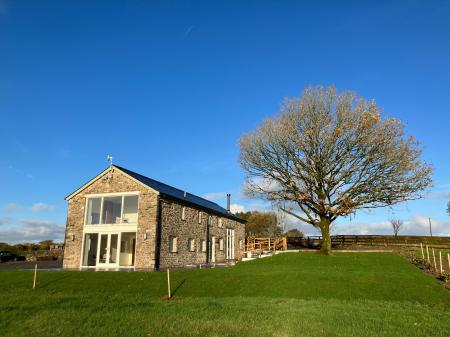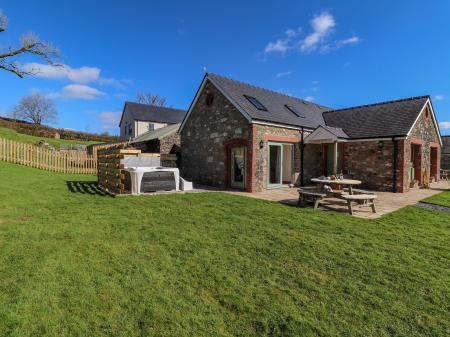
The garden consists of both formal and informal areas, including the remarkable Ninfarium, an indoor garden area housed in an old part of the house.
Essentially, the Ninfarium is an indoor greenhouse built in the old parts of Aberglasney House itself, with restored stone walls and timber framed doorways, topped by glassed roofs providing light and heat for a variety of exotic plants from around the world. The effect is quite marvellous, and so unlike the standard hothouse or orangery that one finds at so many historic houses.
Below the house itself are several formal garden areas, including a cloister garden, with parapets offering a birds-eye view over the formally laid out avenues. There is an Upper Walled Garden decorated with trimmed box hedges, and a Lower Walled Garden dedicated to a variety of edible plants.
A large pool garden leads to a small woodland garden, and to a more modern sunken garden. On the slopes above the house are more informal garden areas, including rock garden, Oriental Garden, and Bishop Rudd's walk.

Visiting
There is a cafe, and a small garden centre, where visitors can purchase a variety of intriguing and unusual plants. Taken as a whole, Aberglasney will delight the keen gardener, and offer an enjoyable excursion for those with an interest in the historic gardens of Britain.
Aberglasney is easily one of the most intriguing and enjoyable historic gardens we have visited in Wales. I loved the more formal Cloister Gardens, with carefully arranged avenues and potted orange trees, and the Ninfarium was unlike anything I've ever seen at an historic house. Do take the time to visit Aberglasney; it is well worth an extended visit.






 We've 'tagged' this attraction information to help you find related historic attractions and learn more about major time periods mentioned.
We've 'tagged' this attraction information to help you find related historic attractions and learn more about major time periods mentioned.




